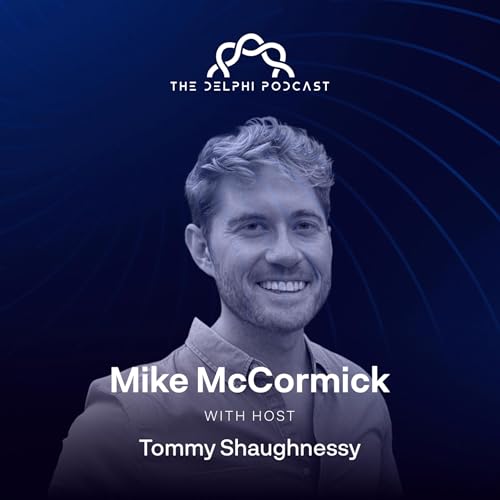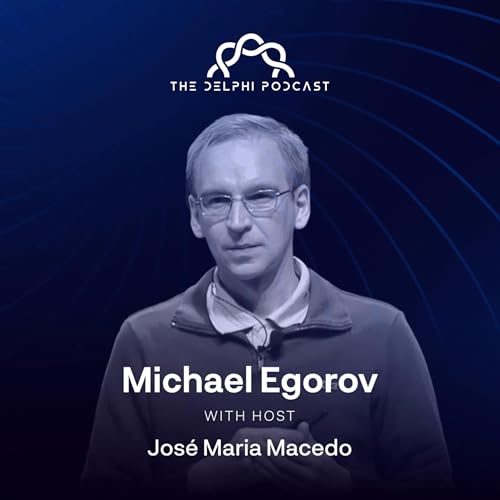Anil Lulla and Yan Liberman host Sapijiju, co-founder of Pump.fun. Sapijiju shares Pump.fun’s bigger vision: beyond meme coins, it’s aiming to be the most rewarding social platform, revolutionizing creator monetization, and building a $2B-backed financial ecosystem.
Pump.fun: https://pump.fun
🎯 Key Highlights
▸ Pump.fun’s vision: TikTok + Robinhood + Twitch in one
▸ Streamers earning 100–300x more than on traditional platforms
▸ 9 failed products before finding product-market fit
▸ Why most crypto firms are just riding Bitcoin
▸ New fee model: $2.4M to creators on day one
▸ Mobile-first: beating desktop crypto apps
▸ $2B balance sheet for smart capital moves
▸ 100% revenue buybacks (Hyperliquid/Binance playbook)
▸ Roadmap: stablecoin + full financial stack
▸ Young founders vs. traditional finance
▸ Why social media’s incentives are broken
▸ Targeting 16–24s ignored by incumbents
▸ Stats: 70 staff, $1.6B locked, billion+ daily volumes
▸ Aggressive M&A, Facebook-style
💡 Subscribe for more crypto & AI insights! 🔔
🧠 Follow the Alpha
▸ Sapijiju's Twitter: @sapijiju
▸ Pump.fun Twitter: @pumpdotfun
🔗 Connect with Delphi
🌐 Portal: https://delphidigital.io/
🐦 Twitter: https://x.com/delphi_digital
💼 LinkedIn: https://www.linkedin.com/company/delphi-digital/
🎧 Listen on
Spotify: https://open.spotify.com/show/62PR1RigLG2YN5Pelq6UY9?si=18ac7ccf36ab4753&nd=1&dlsi=50105fd66e6c4124
Apple Podcasts: https://podcasts.apple.com/us/podcast/the-delphi-podcast/id1438148082
Youtube: https://www.youtube.com/channel/UC9Yy99ZlQIX9-PdG_xHj43Q
Timestamps
00:00 – Intro & Sapijiju’s crypto journey
04:45 – 9 failed products → Pump.fun success
07:15 – Product-market fit & anti-rug mechanism
09:15 – Scaling team to 70
10:30 – Vision: social trading super-app
13:00 – $2.4M to streamers on launch day
14:15 – Why social platforms fail creators
16:45 – 300x better monetization
18:15 – DMs, streaming & mobile-first
19:30 – Competing vs. Coinbase/Binance
21:45 – User patterns: TikTok + finance
24:30 – Network effects via creator rewards
26:30 – $500k creator starter kits
28:00 – Mobile strategy for viral growth
29:15 – Zora vs. Pump.fun (content vs. coin)
31:15 – Small changes → 5x streaming growth
33:30 – Sandbox for creator freedom
35:15 – Telegram + crypto-native tools
36:30 – Democratized ICOs
38:15 – $1.6B locked, billion+ daily volumes
39:15 – Stablecoin vision
40:15 – Long-term: global takeover
42:30 – $2B balance sheet strategy
44:30 – ROI-driven capital deployment
45:15 – M&A playbook
46:15 – DAT & institutional access
47:15 – Revenue buybacks model
49:15 – VCs missing meme culture
51:15 – Story Protocol critique
53:30 – Meme coins vs. infra “scams”
54:30 – Generational wealth cycles
57:45 – Crypto as last frontier
59:15 – TradFi as modern slavery
1:01:30 – Black Mirror & moderation
1:02:30 – Mobile growth engines
1:03:30 – Scaling to $200M daily revenue
1:04:30 – Post-token comms lessons
1:05:30 – Open DMs & next episode
1:06:15 – Closing thoughts
Disclaimer
This podcast is strictly informational and educational and is not investment advice or a solicitation to buy or sell any tokens or securities or to make any financial decisions. Do not trade or invest in any project, tokens, or securities based upon this podcast episode. The host and members at Delphi Ventures may personally own tokens or art that are mentioned on the podcast. Our current show features paid sponsorships which may be featured at the start, middle, and/or the end of the episode. These sponsorships are for informational purposes only and are not a solicitation to use any product, service or token.
 Oct 9 20251 h y 42 m
Oct 9 20251 h y 42 m 53 m
53 m 1 h y 15 m
1 h y 15 m 1 h y 7 m
1 h y 7 m 56 m
56 m 1 h y 13 m
1 h y 13 m 1 h y 7 m
1 h y 7 m 57 m
57 m
